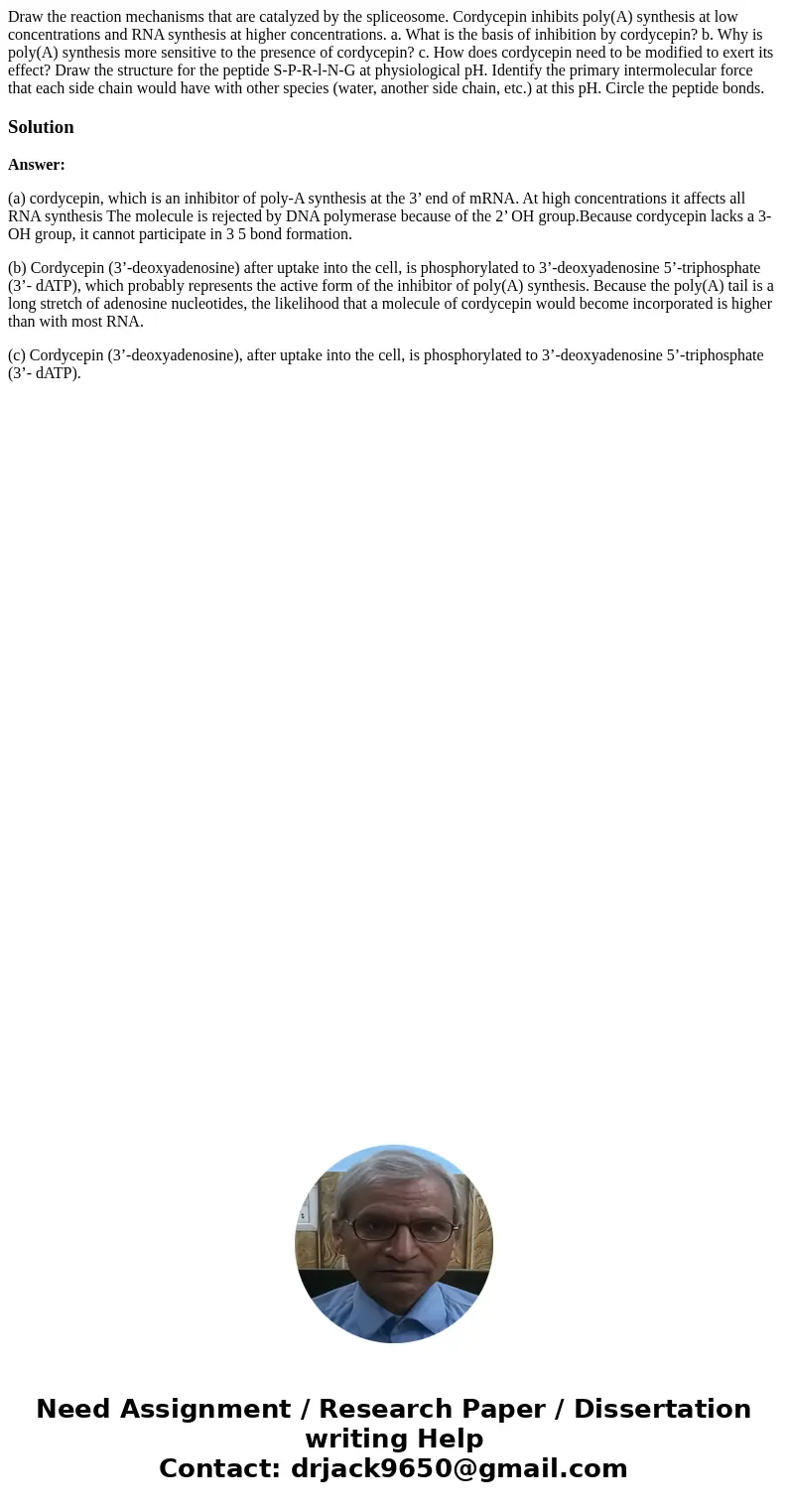Draw the reaction mechanisms that are catalyzed by the splic
Solution
Answer:
(a) cordycepin, which is an inhibitor of poly-A synthesis at the 3’ end of mRNA. At high concentrations it affects all RNA synthesis The molecule is rejected by DNA polymerase because of the 2’ OH group.Because cordycepin lacks a 3-OH group, it cannot participate in 3 5 bond formation.
(b) Cordycepin (3’-deoxyadenosine) after uptake into the cell, is phosphorylated to 3’-deoxyadenosine 5’-triphosphate (3’- dATP), which probably represents the active form of the inhibitor of poly(A) synthesis. Because the poly(A) tail is a long stretch of adenosine nucleotides, the likelihood that a molecule of cordycepin would become incorporated is higher than with most RNA.
(c) Cordycepin (3’-deoxyadenosine), after uptake into the cell, is phosphorylated to 3’-deoxyadenosine 5’-triphosphate (3’- dATP).

 Homework Sourse
Homework Sourse